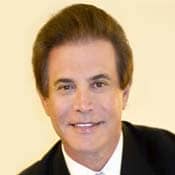Note: This is Part 2 of a four-part series on "the God Particle." Read Part 1 here.
I always loved those Hollywood westerns like the Wild Bunch where a group of American adventurers fling the dice, cross the border into Mexico, and enter a different world of intrigue. This is where the Higgs boson might lead us, for it appears to dwell on the borderline between the intriguing energetic world and the "solid" world of mundane matter.
Einstein's famous formula E=Mc2 tells us that energy and mass are interchangeable, and there can be no matter without mass. So, solid matter ultimately derives from un-solid energy such as light. The significance of the Higgs boson is that it might indicate the gateway to life as we know it; it might describe the mechanism that explains how Einstein's formula actually works, that is, how energy actually becomes matter.
The Higgs Boson
The real play in this story is not so much the Higgs boson, but rather the Higgs field, so we'll talk about both. Every force in nature is an energy field, such as electromagnetism or the strong nuclear force. Every force field has a messenger or force-carrying particle unique to it. Higgs bosons are the energy particles that make up the Higgs Field. That's the common explanation of the Higgs boson, but I'm going to throw a wrinkle at you because I like to be precise and because this wrinkle illuminates the fantastically fascinating weirdness of the quantum world.
The use of the term "particle" is a bit of a misnomer. I'm not going to befuddle you with all the weird names of numerous subatomic particles. Let's simplify it. Two broad categories exist in the quantum world: fermions and bosons. Fermions are held to be particles displaying mass, which is a necessary ingredient of matter. Bosons are like packets of massless energy or force carrying units making up energy fields like the electromagnetic field.
See the contradiction? The Higgs boson is being called a particle, but a boson is an energy force. The reason for this is that "particle," at the finest levels of the quantum world, is really a term of convenience to describe processes that are neither wholly matter nor wholly energy but display characteristics of both. Bosons, like the Higgs, are fundamentally energy, but they can travel in a straight line, blipping in and out of existence with particle-like behavior. This is called particle-wave duality, virtual particles, or massless particles. All these terms indicate the hybrid nature of these subatomic processes.
I like to think of the Higgs boson as a form of energy that acts as a virtual particle, a packet of energy that displays a fleeting existence as a particle to perform a task and then falls back into pure energy. But as I said earlier, the Higgs boson is the signature for the real play here, the Higgs field.
In next week's column, I'll discuss how the Higgs field creates the building blocks of matter from pure energy to form the appearance of the solid world we perceive.
12/2/2022 9:02:28 PM





